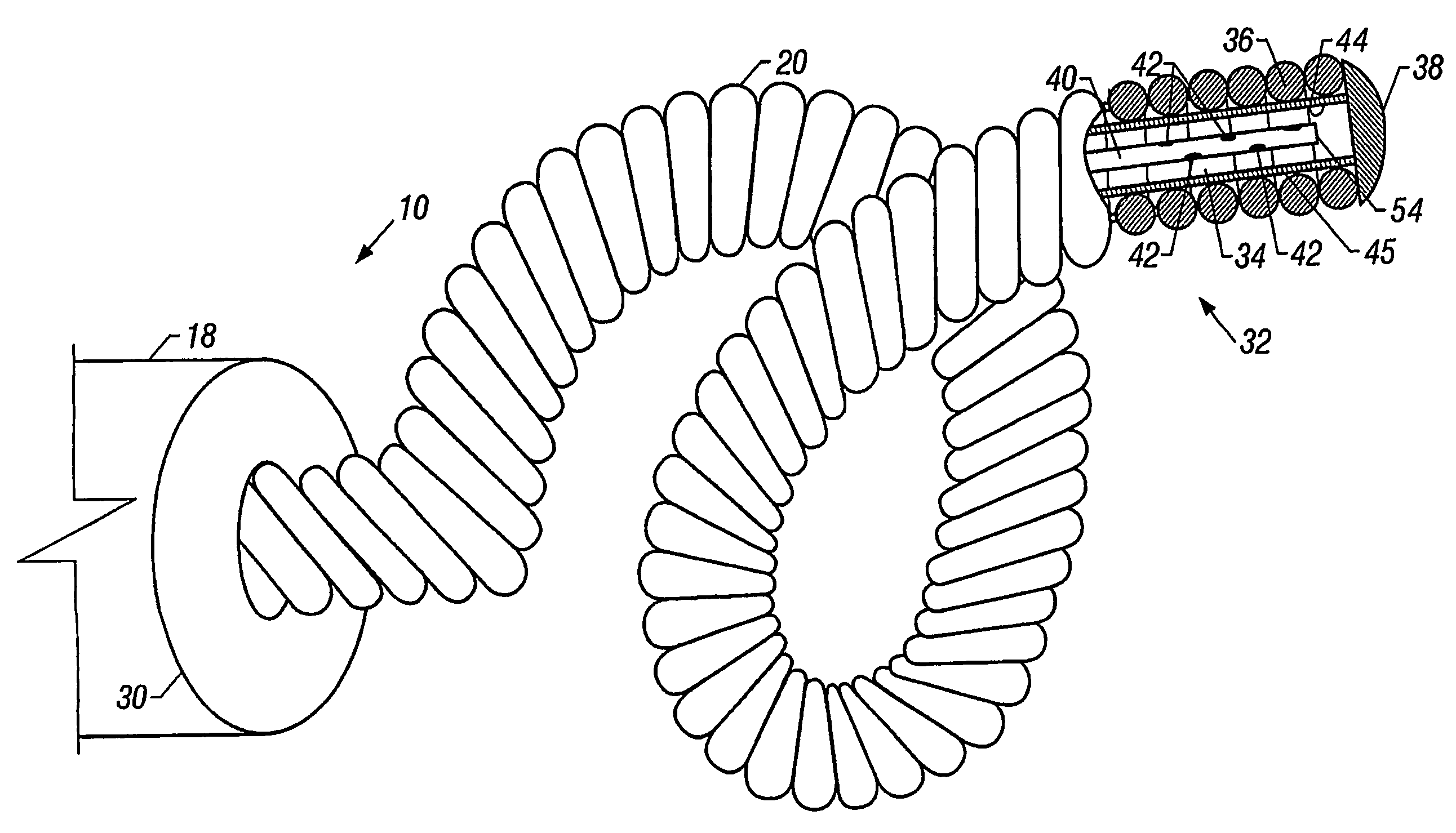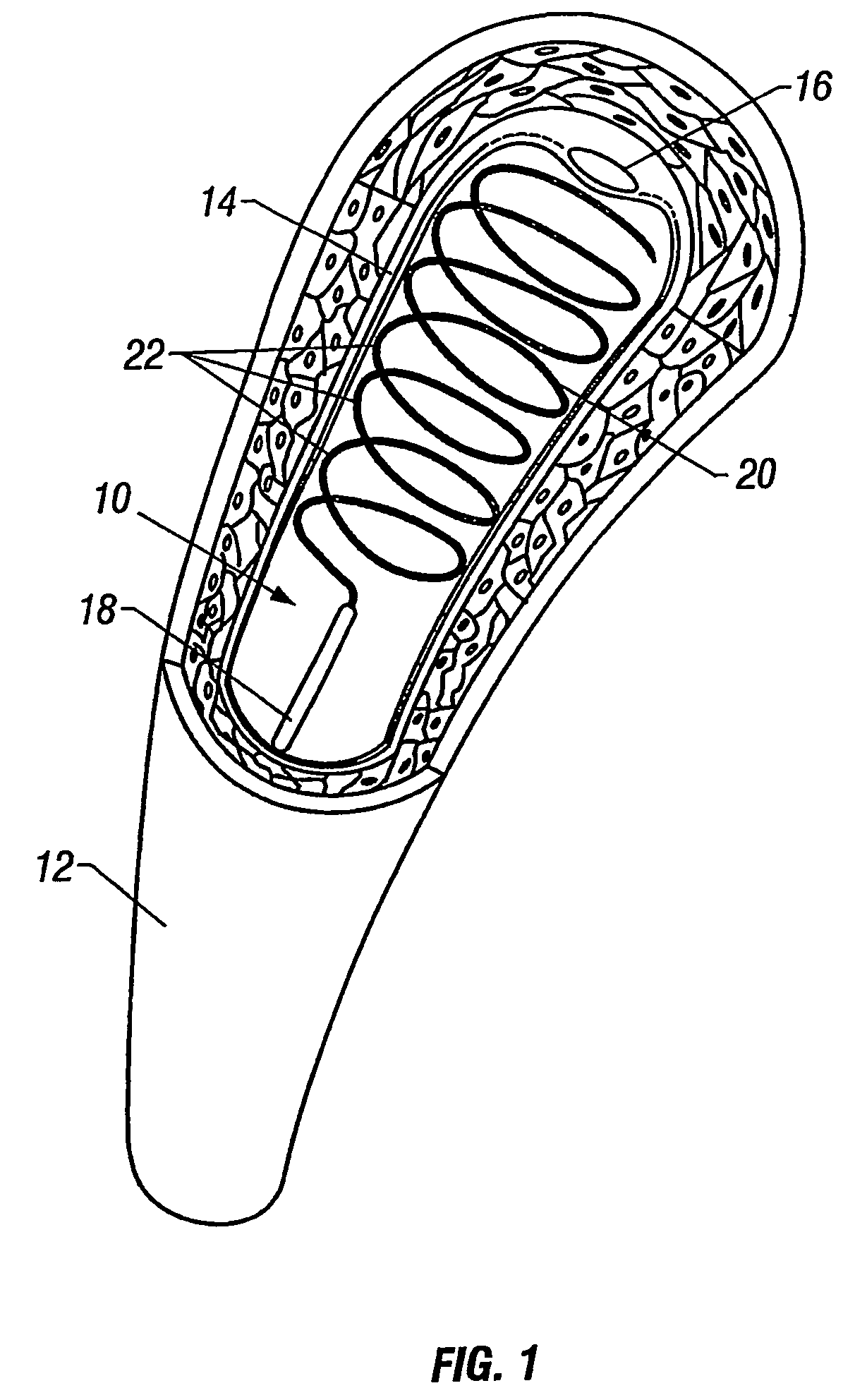Methods and apparatus for cryo-therapy
a cryo-treatment and apparatus technology, applied in the field of cryo-therapy, can solve the problems of affecting the efficiency of cryo-treatment devices, affecting the efficiency of cryo-treatment, and inflamed plaques are particularly unstable and vulnerable to disruption, so as to reduce the heat transfer area of guidewires, optimize the efficiency of cooling during treatment, and minimize the exposure of guidewires
- Summary
- Abstract
- Description
- Claims
- Application Information
AI Technical Summary
Benefits of technology
Problems solved by technology
Method used
Image
Examples
Embodiment Construction
[0043]Cryogenic treatment of tissue may involve many different device variations and methods. As shown in FIG. 1, cryo-therapy device 10 is shown positioned within arterial blood vessel 12, which has its wall partially removed for clarity. One variation of the device 10 is shown as having a hollow guidewire 20 configured to form multiple loosely spaced helical loops 22. Guidewire 20 is preferably made of a thin wire which may be wound into small helical coils of a predetermined diameter that may lie tightly adjacent to one another to form a hollow guidewire 20 defining a central passageway. These loops 22 may be held within lumened catheter 18 in a first configuration while being delivered to the desired treatment site.
[0044]Once ejected or pushed from catheter 18, guidewire 20 may be self-deploying or self-forming such that when it is unconstrained, it reconfigures itself into a second configuration. This may be accomplished by having guidewire 20 self-form or spring into helical l...
PUM
 Login to View More
Login to View More Abstract
Description
Claims
Application Information
 Login to View More
Login to View More - R&D
- Intellectual Property
- Life Sciences
- Materials
- Tech Scout
- Unparalleled Data Quality
- Higher Quality Content
- 60% Fewer Hallucinations
Browse by: Latest US Patents, China's latest patents, Technical Efficacy Thesaurus, Application Domain, Technology Topic, Popular Technical Reports.
© 2025 PatSnap. All rights reserved.Legal|Privacy policy|Modern Slavery Act Transparency Statement|Sitemap|About US| Contact US: help@patsnap.com



